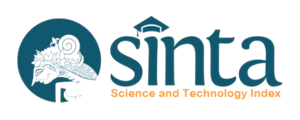INFLUENCE OF TEACHING EXPERIENCE ON TEACHERS’ LEVEL OF USE OF CRITICAL THINKING
(1) Faculty of Educational Sciences, Morocco
(*) Corresponding Author
Abstract
Critical thinking is very important in the area of education, because it is an essential tool for solving problems and making good decisions. Through applying critical thinking in learning, students can become creative in discovering the best method of learning and organizing their work. Therefore, critical thinking is not an educational choice and all learners should be taught to think critically. The primary objective of this paper is to study whether teaching experience played a role in teachers’ level of use of critical thinking. The quantitative method was used. The respondents of the study were Moroccan English high school teachers. A questionnaire was used to collect data from teachers. Both the online version and the paper-based version of the questionnaire were used to gather data from the participants. A total of 423 questionnaire were collected from the respondents. The
Statistical Package for Social Sciences (SPSS) version 19 was used to analyze the data. The findings reveal that teaching experience significantly impacts teachers’ level of use of critical thinking. This suggests that there is a connection between teachers’ effectiveness and years of experience.
Keywords
Full Text:
PDFReferences
Abrami, P. C., Bernard, R. M., Borokhovski, E., Wade, A., Surkes, M. A., Tamim, R., and Zhang, D. (2008). Instructional Interventions Affecting Critical Thinking Skills and Dispositions: A Stage 1 Meta-Analysis, Reviewed of Educational Research, 78(4), 1102-1134.
Alan Bensley, D. and Spero, R.A. (2014) 'Improving critical thinking skills and metacognitive monitoring through direct infusion', Thinking Skills and Creativity, 12(0), pp. 55-68.
Al-Atoom, A., Al-Jaragh, A. and Beshara, M. (2007). Developing Thinking Skills: Theory and Practical Training. Amman, Jordan: Al-dar Al-Massira.
Al-Qasmi (2006). Problem Solving In Biology At University Level. PhD thesis submitted to University of Glasgow, UK.
Bartlett, J. E. (2002). Analysis of motivational orientation and learning strategies of high school business students. Business Education Forum, 56(4), 18–23.
Bataineh, R.G., & Zghoul, L. H. (2006) Jordanian TEFL graduate students’ use of critical thinking skills (as measured by the Cornell Thinking Tests, Level Z). The International Journal of Bilingual Education and Bilingualism, 9 (1), pp. 33–50
Bensley, A., & Murtagh, M. (2012). Guidelines for a scientific approach to critical thinking assessment. Teaching of Psychology, 39(1), 5-16.
Beyer, B. K. (1997). Improving student thinking: a comprehensive approach. MA: Allyn & Bacon.
Bloom, B. (1956). A Taxonomy of Educational Objectives, Handbook 1: Cognitive Domain. New York: McKay
Burke, L.,Williams, J.& Skinner, D. (2007). Teachers' perceptions of thinking skills in the primary curriculum. Research in Education, 77, 1-13
Chaffee, J. (1988). Thinking critically (2nd ed.). Boston, MA: Houghton Mifflin.
Chingosa, M.M., & Peterson, P.E. (2010). It’s easier to pick a good teacher than to train one: Familiar and new results on the correlates of teacher effectiveness. Economics and Education Review, 30(3), 449-465.
Cohen, J. W. (1988). Statistical power analysis for the behavioral sciences (2nd edn). Hillsdale, NJ : Lawrence Erlbaum Associates.
Creswell, J. W. (2012). Educational research: Planning, conducting, and evaluating quantitative and qualitative research (4th ed.). Upper Saddle River, NJ: Pearson Education.
Creswell, J.W. (2009). Research design: Qualitative, Quantitative, and Mixed Methods Approaches. Thousand Oaks, CA: Sage Publications, Inc.
Dewey, J. (1933). How we think: A restatement of the relation of reflective thinking to the educative process. Boston: D.C. Heath.
Dewey, J. (1938). Experience and education. New York, NY: Simon and Schuster.
Dewey, J. (2009). How we think. (Reprint). Milton Keynes, UK: Lightning Source UK Ltd.
Ennis, R.H. (1993). Critical Thinking Assessment. Theory into Practice. Vol. 32, No. 3, pp. 179-186.
Facione, P. (1990). The Delphi Report. Critical Thinking: A Statement of Expert Consensus for Purposes of Educational Assessment and Instruction. Millbrae, CA: The California Academic Press.
Facione, P. A., Facione, N. C., Blohm, S & Gittens, C. A (2008). California critical thinking skills test manual. CA: Insight Assessment, The California Academic Press.
Ge, X., & Hardre, P. L. (2010). Self-processes and learning environment as influences in the development of expertise in instructional design. Learning Environments Research, 13 (1), 23-41.
Gellin, A (2003). The effect of undergraduate student involvement on critical thinking: A meta-analysis of the literature 1991-2000. Journal of College Student Development. 44(6),746-762.
Giancarlo, C. A., Blohm, S. W. And Urdan, T. (2004). Assessing Secondary Students’ Disposition toward Critical Thinking: Development of The California Measure of Mental Motivation, Educational and Psychological Measurement, 64 (2), 347-364.
Gibby, C. (2013). Critical thinking skills in adult learners. Arecls, 10,147-176.
Hattie, J.A.C. (2009). Visible learning: A synthesis of over 800 meta-analyses relating to achievement. London: Routledge.
Hoy, A., & Tschannen-Moran, M.(2007). The differential antecedents of self-efficacy beliefs of novice and experienced teachers. Teacher and Teacher Education, 23, 944-956.
Jackson, M (2006) In M. Jackson, D. D. Ignatavicius, & B. Case. (Eds.), Critical Thinking and Clinical Judgment (pp. 3-17). London: Jones and Bartlett Publishers, Inc.
Kuhn, D. & Dean, D. (2004). A bridge between cognitive psychology and educational practice. Theory into Practice, 43(4), 268-273.
Larkin,S. (2009). Metacognition in young children. New York, NY: Routledge.
Lipman, M. (1989). Misconceptions in teaching for critical thinking. Montclair State College,
Maleki, H. (2007). Curriculum. Tehran: Payam Andisheh.
McConnell, J. (2008). An educational strategy to improve graduate nurses critical thinking skills during the hospital orientation program. The jornal of continuing education in nersing, 3, 193.
McPhail, C. (2005). Establishing & sustaining learning-centered community colleges. Washington: Community College Press.
Moon, J. (2008); Critical Thinking: An Exploration of Theory and Practice. London: Routledge.
Murley, L. D., Keedy, J. L., & Welsh, J. F. (2008). Examining school improvement through the lens of principal and teacher flow of influence in high achieving, high poverty schools. Leadership and Policy in Schools, 7, 380-400.
Murnane, R.J., & Phillips, B.R. (1981). Learning by doing, vintage, and selection: Three pieces of the puzzle relating teaching experience and teaching preformance. Economics of Education Review, 1(4), 453-465.
Newman, W. L. (2003). Social research methods: qualitative and quantitative approach. Sydney: Pearson Education, Inc.
Oates, B. J. (2006). Researching information systems and computing. London: SAGE.
Palmer, D., Stough, L., Burdenski, T., & Gonzales, M. (2005). Identifying teacher expertise: An examination of researchers' decision making. Educational Psychologist, 40(1), 13-25.
Pascarella, E. & Terenzini, P. (1991). How college affects students. San Francisco, CA: Jossey-Bass.
Penningroth, S. L., Despain, L. H., & Gray, M. J. (2007). A course designed to improve psychological critical thinking. Teaching of Psychology, 34(3), 153-157.
Pinkney, J., & Shaughnessy, M. (2013). Teaching critical thinking skills: A modern mandate. International Journal of Academic Research, 5(3), 346-352.
Sadler, D. R. (1989) Formative assessment and the design of instructional systems, Instructional Science, 18, 119–144.
Semmar, Y., & Fakhro, A. (2009). Investigating Critical Thinking Skills Practices in Qatari Elementary Schools. International Journal Of Learning, 16(1), 13-23.
Tempelaar, D. T. (2006). The role of metacognition in business education. Industry and Higher Education, 20(5), 291–297.
Vacek, E. (2009). Using a conceptual approach with concept mapping to promote critical thinking. Educatinanl Innovation, 1, 48.
Van der Stel, M., & Veenman, M. V. J. (2010). Development of metacognitive skillfulness: a longitudinal study. Learning and Individual Differences, 20, 220–224.
Wangensteen, S., Johansson, I .S., Bjorkstrom, M. E., & Nordstrom G. (2010) Critical thinking dispositions among newly graduated nurses.Journal of Advanced Nursing, 66(10), 2170-2181.
Williams, R. L. (2005). Targeting critical thinking within teacher education: The potential impact on society. The Teacher Educator, 40(3), 163-187.
Wolters, C., & Daugherty, S. G. (2007). Goal structures and teachers' sense of efficacy: Their relation and association to teaching experience and academic level. Journal of Educational Psychology, 99, 181.
DOI: https://doi.org/10.24071/llt.v24i2.3719
Refbacks
- There are currently no refbacks.
Copyright (c) 2021 Youssouf LY Laabidi

This work is licensed under a Creative Commons Attribution-ShareAlike 4.0 International License.
LLT Journal: A Journal on Language and Language Teaching Sinta 1 Certificate
.jpg)

This work is licensed under CC BY-SA.
Creative Commons Attribution-ShareAlike 4.0 International License


.png)

















